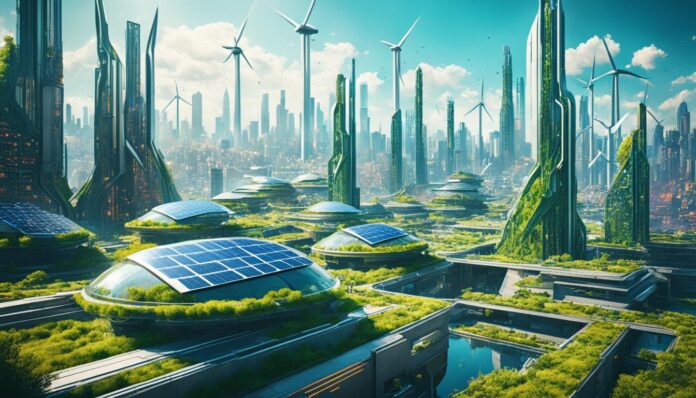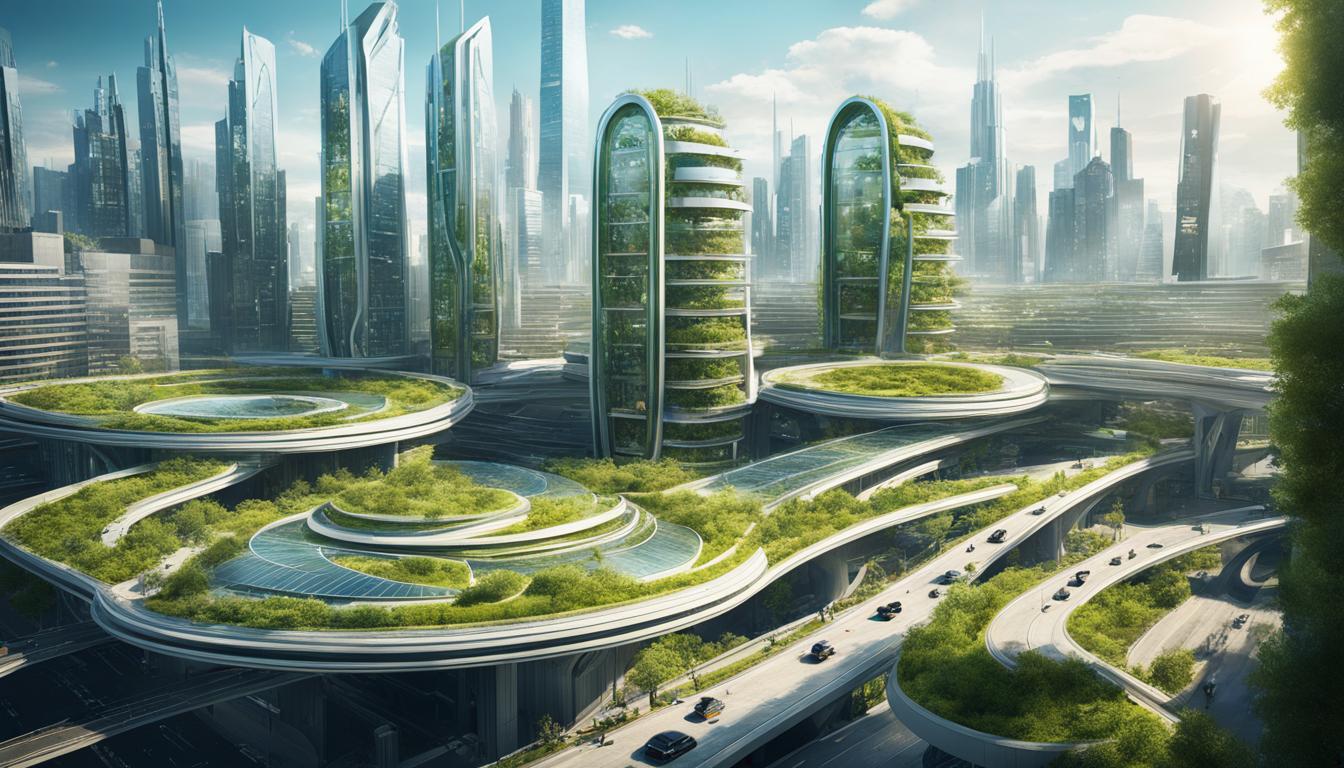
The circular economy is celebrated as a trillion-dollar opportunity beginning to penetrate industries around the world. There’s no sector or region left untouched by the potential for reinventing systems, products and services in a fashion that ultimately creates no waste and even regenerates natural systems. This report from the Ellen MacArthur Foundation details the potential for significant benefits across the EU, arguing that a subset of the EU manufacturing sector could realize net materials cost savings worth up to $630 billion per annum towards 2025—stimulating economic activity in the areas of product development, remanufacturing, and refurbishment. The report also focuses on fast-moving consumer goods, which currently account for about 60% of total consumption, as a key area of opportunity for the circular economy.
Key Takeaways
- The circular economy presents a trillion-dollar opportunity for industries worldwide.
- Significant net material cost savings of up to $630 billion per year are possible in the EU manufacturing sector by 2025.
- Fast-moving consumer goods, accounting for 60% of total consumption, are a key focus area for the circular economy.
- Circular economy principles can stimulate economic activity in product development, remanufacturing, and refurbishment.
- Embracing the circular economy can help businesses reduce waste, improve resource efficiency, and create new revenue streams.
Embracing Circular Economy for Economic Benefits
The transition to a circular economy presents significant opportunities for businesses to realize tangible economic benefits. According to a report from the Ellen MacArthur Foundation, the EU manufacturing sector could potentially achieve net material cost savings worth up to $630 billion per annum towards 2025 by embracing circular economy principles. These savings would stimulate economic activity in areas like product development, remanufacturing, and refurbishment.
Net Material Cost Savings
The report from the Ellen MacArthur Foundation, leveraging product case studies and economy-wide analysis, details the potential for substantial net material cost savings in the EU manufacturing sector. By rethinking their approach to resource use and waste management, manufacturers can unlock significant net material cost savings that would further drive economic growth and investment in the circular economy.
Fast-Moving Consumer Goods
The Ellen MacArthur Foundation report also highlights the fast-moving consumer goods sector, which currently accounts for about 60% of total consumption, as a key area of opportunity for the circular economy. By incorporating circular economy principles into the production and consumption of fast-moving consumer goods, businesses can realize significant economic benefits through reduced material costs, extended product life, and new revenue streams from reuse, repair, and recycling.
What are the emerging opportunities in the circular economy for 2025?
Urban Systems Transformation
The Ellen MacArthur Foundation has developed a series of factsheets outlining circular economy opportunities to design out urban waste and pollution, ensure products and materials maintain their value, and regenerate the natural systems in our sustainable cities. These factsheets focus on three interrelated urban systems – buildings, mobility, and products – and identify key opportunities in the planning, design, manufacturing, access, and operation & maintenance phases of these systems. By integrating circular economy principles across these urban systems, cities can reduce virgin material consumption, eliminate waste and pollution, maximize infrastructure and product utilization, and lower use and operation costs.
Innovative Business Models
The transition to a circular economy is driving the development of innovative business models that move away from the traditional linear “take-make-waste” approach. These new models include product-service systems that focus on providing access to products rather than ownership, sharing economy platforms that enable the collaborative use of assets, and services that extend the life of products through repair, remanufacturing, and recycling. By embracing these circular business models, companies can create new revenue streams, improve resource efficiency, and reduce their environmental impact.

Unlocking Circular Economy Jobs and Skills
The transition to a circular economy is creating new job opportunities in areas like product and packaging design. Designers play a crucial role in rethinking the way products and their packaging are designed to eliminate waste, use sustainable materials, and enable easier repair, reuse, and recycling. The Ellen MacArthur Foundation and design firm IDEO have developed a Circular Design Guide to inspire and inform the design community, with the goal of engaging 20 million designers by 2025 to design products in innovative new ways.
Reverse Logistics and Product Lifecycle Management
As the circular economy gains momentum, new roles are emerging in reverse logistics and product lifecycle management. Reverse logistics professionals are responsible for reducing the environmental impact and costs associated with product returns, ensuring materials are efficiently recovered and reintegrated into the closed-loop systems. Product lifecycle managers take a holistic view of the product lifecycle, from sourcing to end-of-life, to find new ways to create, distribute, and recover value from products and materials. These roles require a combination of big-picture thinking and attention to detail to optimize circular supply chains and business models.
Conclusion
The transition to a circular economy presents a wealth of emerging opportunities across industries and sectors. By embracing circular economy principles, you can unlock significant economic benefits for your business, from reduced material costs to new revenue streams and improved resource efficiency. Moreover, the shift towards circularity is driving the development of innovative business models and the creation of exciting new jobs in areas like product and packaging design, reverse logistics, and product lifecycle management.
As the circular economy continues to gain momentum globally, these emerging opportunities will only continue to expand, offering you the potential to transform the way you produce, consume, and dispose of goods. By staying ahead of the curve and adapting your operations to align with circular economy principles, you can position your business for success in the years to come.
The transition to a circular economy is not just an economic opportunity, but a chance to contribute to a more sustainable future for our planet. By embracing circularity, you can play a vital role in reducing waste, conserving natural resources, and regenerating the ecosystems that we all depend on. So why not take the first step and explore how the circular economy can benefit your business and the world around you?
FAQ
What are the emerging opportunities in the circular economy for 2025?
The circular economy is celebrated as a trillion-dollar opportunity beginning to penetrate industries around the world. There’s no sector or region left untouched by the potential for reinventing systems, products and services in a fashion that ultimately creates no waste and even regenerates natural systems.
How can businesses realize significant economic benefits from the circular economy?
By incorporating circular economy principles into the production and consumption of fast-moving consumer goods, businesses can realize significant economic benefits through reduced material costs, extended product life, and new revenue streams from reuse, repair, and recycling.
How can cities integrate circular economy principles to reduce waste and pollution?
The Ellen MacArthur Foundation has developed a series of factsheets outlining circular economy opportunities to design out urban waste and pollution, ensure products and materials maintain their value, and regenerate the natural systems in our cities. These factsheets focus on three interrelated urban systems – buildings, mobility, and products – and identify key opportunities in the planning, design, manufacturing, access, and operation & maintenance phases of these systems.
What new business models are emerging in the circular economy?
The transition to a circular economy is driving the development of innovative business models that move away from the traditional linear “take-make-waste” approach. These new models include product-service systems that focus on providing access to products rather than ownership, sharing economy platforms that enable the collaborative use of assets, and services that extend the life of products through repair, remanufacturing, and recycling.
What new job opportunities are being created by the circular economy?
The transition to a circular economy is creating new job opportunities in areas like product and packaging design, reverse logistics, and product lifecycle management. Designers play a crucial role in rethinking the way products and their packaging are designed to eliminate waste, use sustainable materials, and enable easier repair, reuse, and recycling. Reverse logistics professionals and product lifecycle managers are responsible for optimizing circular supply chains and business models.
